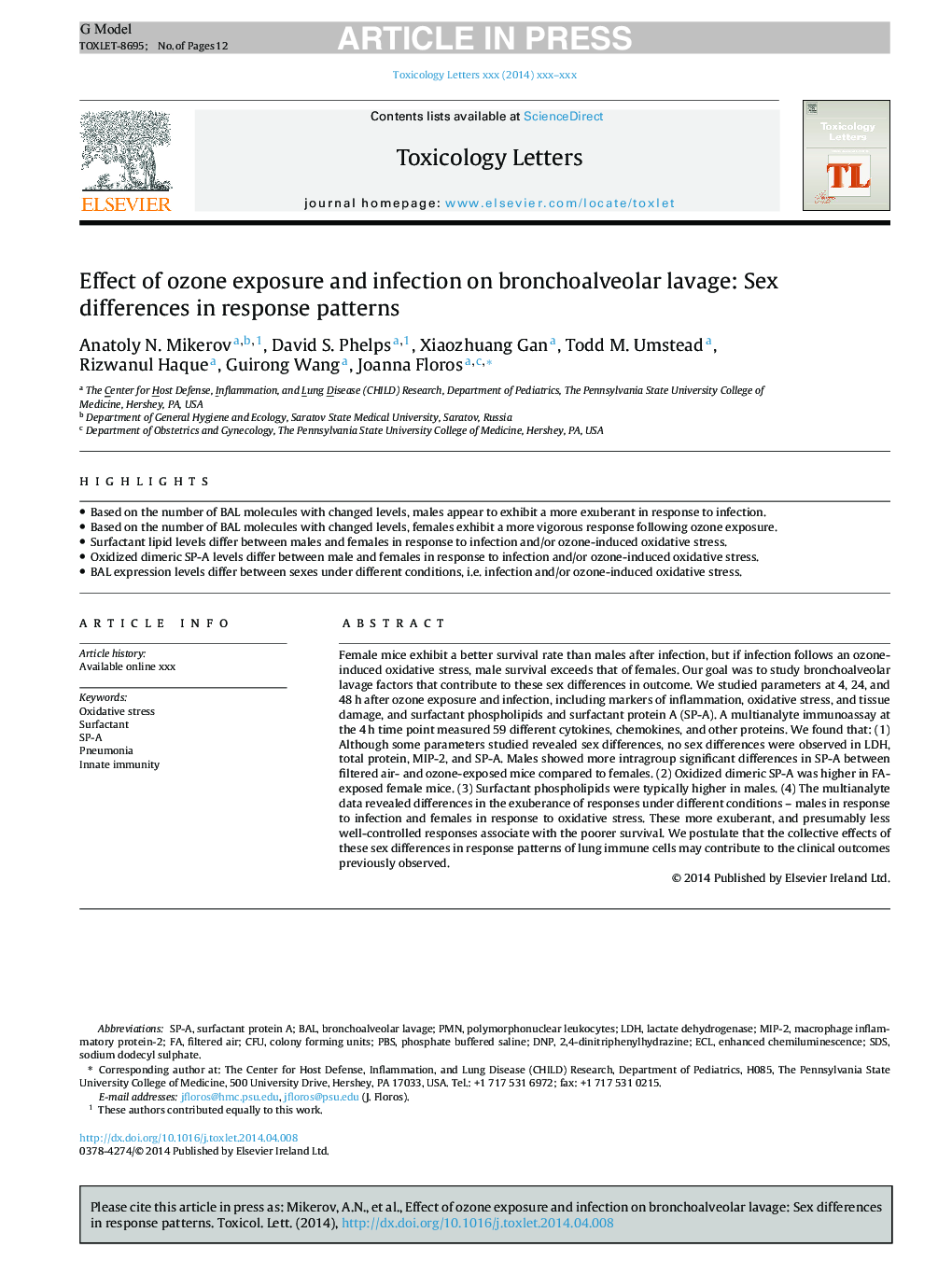| Article ID | Journal | Published Year | Pages | File Type |
|---|---|---|---|---|
| 5860203 | Toxicology Letters | 2014 | 12 Pages |
Abstract
Female mice exhibit a better survival rate than males after infection, but if infection follows an ozone-induced oxidative stress, male survival exceeds that of females. Our goal was to study bronchoalveolar lavage factors that contribute to these sex differences in outcome. We studied parameters at 4, 24, and 48Â h after ozone exposure and infection, including markers of inflammation, oxidative stress, and tissue damage, and surfactant phospholipids and surfactant protein A (SP-A). A multianalyte immunoassay at the 4Â h time point measured 59 different cytokines, chemokines, and other proteins. We found that: (1) Although some parameters studied revealed sex differences, no sex differences were observed in LDH, total protein, MIP-2, and SP-A. Males showed more intragroup significant differences in SP-A between filtered air- and ozone-exposed mice compared to females. (2) Oxidized dimeric SP-A was higher in FA-exposed female mice. (3) Surfactant phospholipids were typically higher in males. (4) The multianalyte data revealed differences in the exuberance of responses under different conditions - males in response to infection and females in response to oxidative stress. These more exuberant, and presumably less well-controlled responses associate with the poorer survival. We postulate that the collective effects of these sex differences in response patterns of lung immune cells may contribute to the clinical outcomes previously observed.
Keywords
PBSMIP-2SP-APMNDNPECLBALSDSCFUInnate immunityenhanced chemiluminescenceOxidative stressPneumoniasodium dodecyl sulphateSurfactantPhosphate buffered salinebronchoalveolar lavagelactate dehydrogenaseLDHpolymorphonuclear leukocytesmacrophage inflammatory protein-2filtered aircolony forming unitsSurfactant protein A
Related Topics
Life Sciences
Environmental Science
Health, Toxicology and Mutagenesis
Authors
Anatoly N. Mikerov, David S. Phelps, Xiaozhuang Gan, Todd M. Umstead, Rizwanul Haque, Guirong Wang, Joanna Floros,
